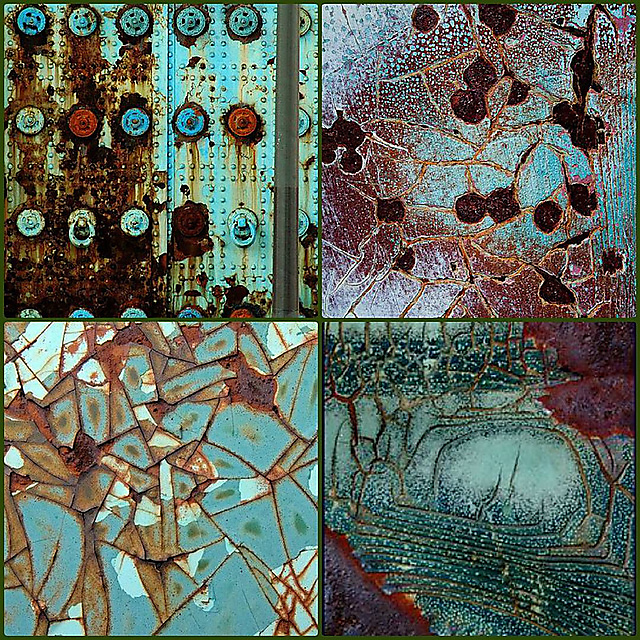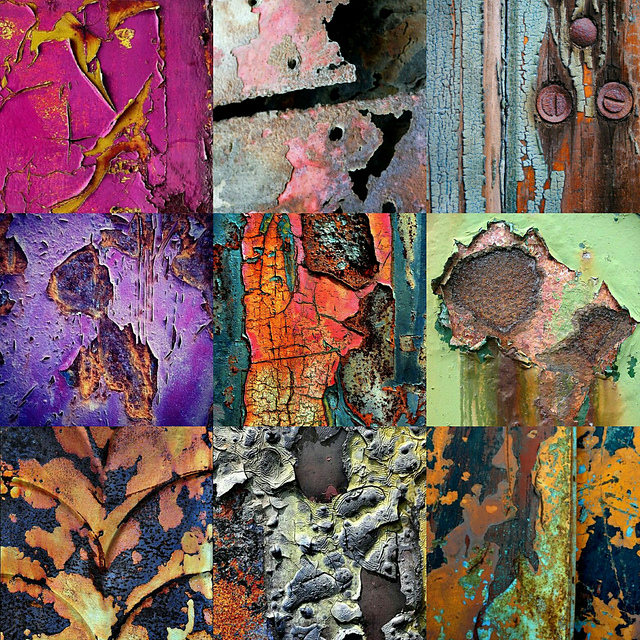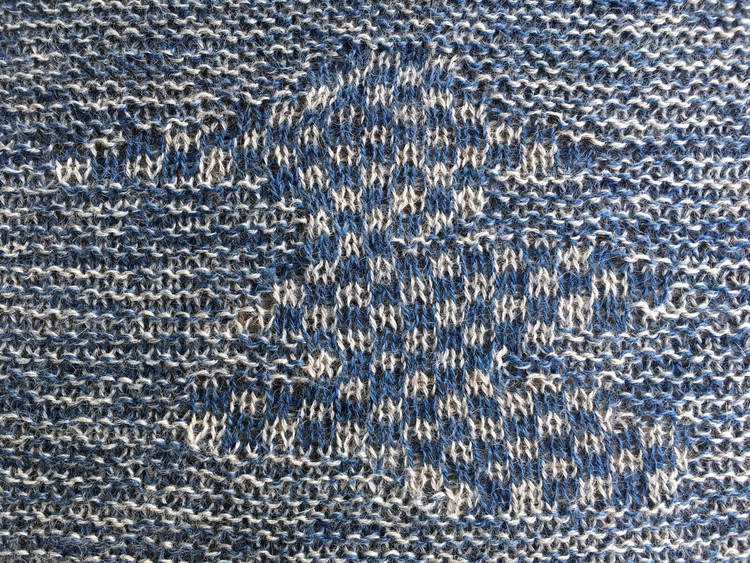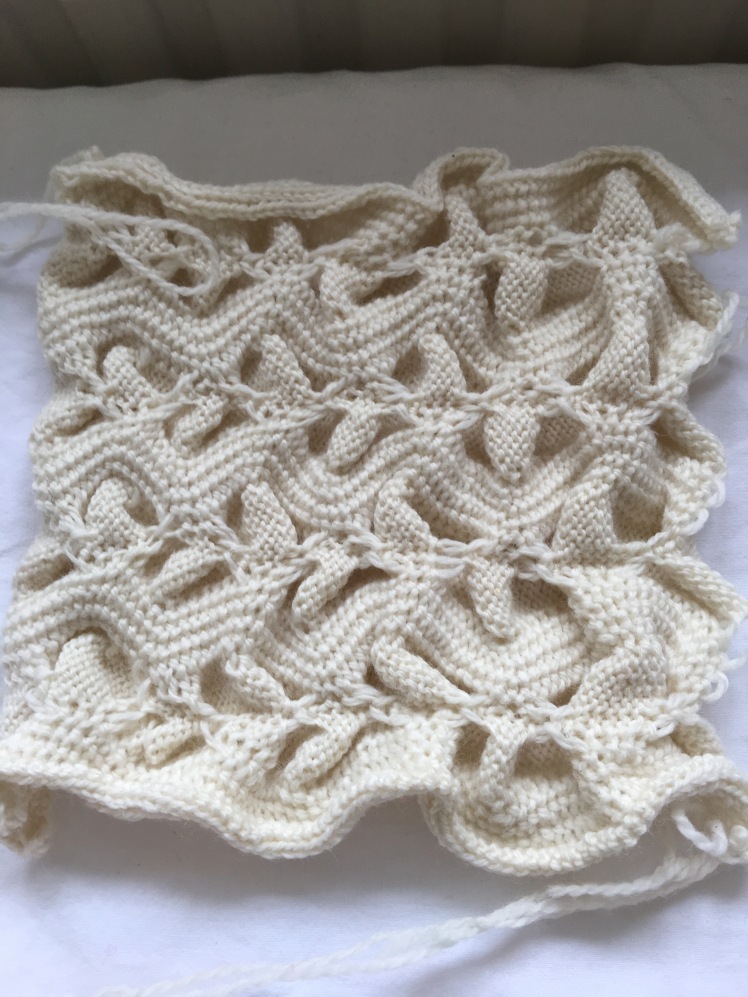Rust is secretly magic - right? Take a metallic object, add some moisture and prolonged exposure to the elements and a fantastic metamorphosis takes place. Nicholas Forrest in writing The Aesthetics of Urban Decay - A Reaction to Rust for artsy.net in 2012 reflects that "a rusty metal surface takes on the characteristics of a living organism which is constantly changing and reacting to its environment. When we see a rusty piece of metal it usually signifies abandonment and disuse but can also represent progress, change and development. As a sort of “living surface” that is beautifully textural, there is more to rusty metal than its utilitarian function would suggest".
On today's inspirational stroll around our (k)nitty, gritty, grungy city, we're going to play close attention to the rustscapes - the places where rust has worked its transformational magic.
For a longer virtual stroll of rustscapes go visit my Pinterest board https://www.pinterest.com.au/ninjaknitter1/derelict/rusted/
Knitting Technique Suggestions
I've always found the random patterning rust forms intriguing to replicate as a fabric. The above rust 'berries' became the basis of a colourwork hat. I started by sketching the dots onto graph paper and then joined them up with curved lines. I made a second chart inspired by a cracked rust surface.See my charts below. For the background I used a shifting, stripey background of variegated blues, turquoise and aqua.
The next step is to add the thin curved lines using some embroidery (stem stitch, chain stitch or back stitch I think).
My freeform piece taking shape
Rust has even made me want to dabble in some crochet - here's my current work in progress. I started with crocheting some tiny circles and then crocheted over the interconnecting yarn and joined up some loops. Then I back-filled sections with knitting or crochet. I'm using doubled lace-weight and sock-weight yarns here. The green is my first piece of handspun yarn - doesn't look too dreadful all knitted up.
























